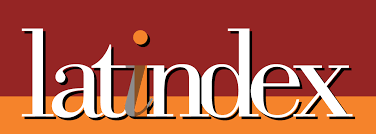Protocol for the characterization of retained canines by cone beam computed tomography
DOI:
https://doi.org/10.60094/RID.20230101-24Keywords:
Cone Beam tomography, impacted teeth, cuspidAbstract
Introduction: Cone beam computed tomography (CBCT) provides precise information on the patient’s anatomy, one of its most frequent indications being the evaluation of impacted and/or retained teeth. Maxillary canines are the most commonly retained/impacted teeth after third molars, making it essential to use tools that facilitate diagnosis, prognosis, and treatment planning. Objective: to present a protocol to characterize retained/impacted canines using TCHC. Materials and Methods: 188 CBCT examinations belonging to patients of both sexes aged 12-73 years were evaluated. Characteristics of depth, angulation, presentation, root state, degree of inclusion, relationship with adjacent structures and associated pathologies were identified. Results: Most of the patients (64.4%, n=121) were female. 147 canines (63.1%) were found to be impacted with deep retention. The retention angulation was classified mostly by mesioangular canines, representing 48.1% of the sample (n=112 ); Evaluating the presentation results, those located towards the palatal/lingual side predominated (45.9%, n=107). Regarding the root state, 183 canines (78.5%) presented complete rhizogenesis. The predominant degree of inclusion was subgingival in 174 canines (74.7%). When evaluating the alterations that these retained teeth caused in adjacent structures, it was found that 65.2% (n=152) of the sample did not generate any damage. Conclusions: the presented protocol allowed us to systematically assess and through specific parameters, the relationship of the retained/impacted canines with the adjacent dental units and anatomical structures of interest, which makes it possible to formulate a more appropriate diagnosis and therapy for the patient.
Downloads
References
Gay C, Berini L. Tratado de Cirugía Bucal. Tomo I. Madrid.Editorial Ergon; 2015.
Nanda, R. Biomecánica en ortodoncia clínica. Buenos Aires, Argentina. Editorial medica Panamericana; 1998.
Varela M. Ortodoncia Interdisciplinar. Volumen 1. Barcelona, España. Editorial Oceano/ergon; 2005.
Deng-gao L, Wan-lin Zhang, Zu-yan Zhang, Yun-tang Wu, Xu-chen Ma. Localization of impacted maxillary canines and observation of adjacent incisor resorption with cone-beam computed tomography. Oral Surg Oral Med Oral Pathol Oral Radiol Endod. 2008; 105:91-8. https://doi.org/10.1016/j.tripleo.2007.01.030
Thilander H, Jakobson S. Local factor in impaction of maxillary canines. Acta Odont Scand 1968; 26: 145-68. https://doi.org/10.3109/00016356809004587
Aguana K, Cohen L, Padrón L. Diagnóstico de caninos retenidos y su importancia en el tratamiento ortodóncico. Rev. Lat Ort Odontp [Internet]. 2011. [Consultado 26 feb 2023]. Disponible en: https://www.ortodoncia.ws/publicaciones/2011/art-11/
Cabrini RL. Anatomía patológica bucal. Buenos Aires, Argentina. Editorial Mundi. 1988.
Trujillo Fandiño JJ. Retenciones dentarias en la región anterior. Práctica Odontológica 1990; 11:29-35.
Ugalde F. Clasificación de caninos y su aplicación clínica. Revista ADM, Rev ADM. 2001; 58(1):21-30.
González García E. Tomografía cone beam 3D. Atlas de aplicaciones en Odontología. Segunda Edición. México. Editorial Amolca. 2014.
Roque-Torres G, Meneses-Lopez A, Bóscolo F, De Almeida S, Neto F. La tomografía computarizada cone beam en la ortodoncia, ortopedia facial y funcional. Rev. Estomatol. Herediana. 2015. Ene-Mar; 25(1) 60-77.
Ericson S, Kurol J. Resorption of incisors after ectopic eruption of maxillary canines: a CT study. Angle Orthod. 2000 Dec;70(6):415-23. http://doi.org/10.1043/0003
Ali IH, Al-Turaihi BA, Mohammed LK, Alam MK. Root resorption of teeth adjacent to untreated impacted maxillary canines: a cone-beam computed tomography study. Biomed Res Int. 2021;9:2021. https://doi.org/10.1155/2021/6635575
Mushtaq N, Shamal S, Hassan N, Shah JU, Ali H. The Comparison of Prognostic Indicators of maxillary impacted canine using OPG (Orthopantomogram) with CBCT (Cone Beam Computed Tomography). J Gandhara Med Dent Sc. 2022;9(2):23–28. http://doi.org/10.37762/
Walker l; Enciso R; Mah J. Three-dimensional localization of maxillary canines with cone-beam computed tomography. Am j orthod dentofacial orthop.2005; 128(4):418-23. http://doi.org/10.1016/j.ajodo.2004.04.033
Abdel.Salam, E.; El-Badrawy, A.; Abdel-Monem, T. Multidetector dental CT in evaluation of impacted maxillary canine. Egypt J Radiol Nuclear Med 2012; 43(4):527-34. https://doi.org/10.1016/j.ejrnm.2012.07.002
Published
How to Cite
Issue
Section
License
Copyright (c) 2023 Reporte Imagenológico Dentomaxilofacial

This work is licensed under a Creative Commons Attribution 4.0 International License.
This work is licensed under a Creative Commons Attribution 4.0 International License.
AUTHORS RETAIN THEIR RIGHTS:
You are free to:
- Share: copy and redistribute the material in any medium or format for any purpose, including commercially.
Adapt: remix, transform and build upon the material for any purpose, including commercially.
The licensor cannot revoke these freedoms as long as you follow the terms of the license under the following terms:
- Attribution : you must give proper credit , provide a link to the license, and indicate if changes have been made. You may do so in any reasonable manner, but not in such a way as to suggest that you or your use is supported by the licensor.
- No additional restrictions: you may not apply legal terms or technological measures that legally restrict others from making any use permitted by the license.











